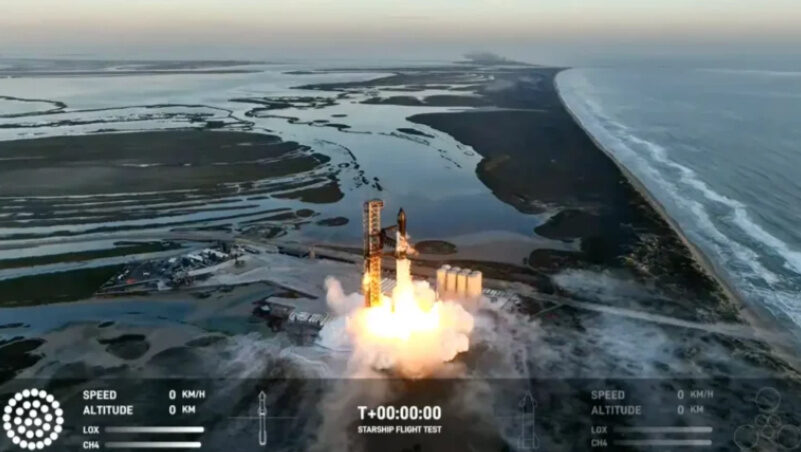
Elon Musk told about the causes of the Starship explosion
SpaceX plans to conduct 150 space launches this year, up from 96 in 2023, with about a dozen of them to be Starship flights. The head of the company believes that he has found out the reasons for the explosion of the ship during its last, third, test flight, and this allows him to hope for the success of the next ones.
In a rather long video posted by SpaceX on the X platform, Elon Musk briefly summarized the results of the past year and also explained what he sees as the causes of the explosion of both stages of the Starship on its second flight, on November 18, 2023. It should be reminded that almost three minutes after takeoff, the first stage separated from the second. And at the moment when the first stage turned on the engines to gently land on the tail, it exploded. The second stage flew up for a few more minutes and reached space (almost 150 kilometers), but then contact was lost, and then the command to self-detonate was given. The rocket, as previously expected, exploded, and its fragments burned up in the atmosphere.
Elon Musk did not raise the question of how the first stage died, which may be due to the fact that SpaceX does not yet have a full understanding of the issue. But he explained what happened to the second stage, which also serves as a ship.
“The reason why it did not reach orbit is that we were jettisoning liquid oxygen (from the second stage – Ed.), and liquid oxygen eventually led to a fire and explosion. We wanted to dump it, because if there was a payload, it would not have been available normally (it would have been consumed while the engines were running – Ed.) Ironically, if the ship had a payload, it would have reached orbit,” Musk said.
Although the explanation sounds logical, it means that the second stage could have collapsed on its own – from a fire followed by an explosion, not from a detonation command.
The company’s CEO said he believes the third launch has a high chance of success. During this flight, Starship is to demonstrate for the first time the pumping of fuel in zero gravity from its main tank to the main tank (aft). In addition, the ship will turn on its Raptor engines in space to test the ability to maneuver there.
It is also planned to test the operation of a special device for simultaneous controlled launching of a large number of satellites. This year, the Starbase spaceport, from where Starship is launched, plans to build a second launch tower, which will allow launching such ships with small time gaps.
This does not mean that one tower is not enough right now: Only ten Starship launches are planned for 2024. However, the second tower is needed for two close launches of Starship, one of which will be able to refuel the other in orbit. For the upcoming lunar mission, when the SpaceX spacecraft will land astronauts on the Earth’s satellite, at least a dozen flights will be needed to refuel the ship. They will be carried out by a ship of the same type, but with a “tanker” payload, carrying liquid methane and oxygen for pumping on orbit.
“This is a big deal. This is one of the fundamental technologies needed to build a city on Mars and a base on the Moon,” Musk added.
As a promising goal for the company, the SpaceX CEO outlined the creation of new versions of the Starship 140 meters or more high (currently, the total height of both stages is only 121 meters). In this case, the payload will increase from 100 to 200 tons. Again, such high payload figures are not due to current needs, but to the fact that Elon Musk sees the new ship as a means of colonizing Mars, which requires sending millions of tons of cargo to the fourth planet.

